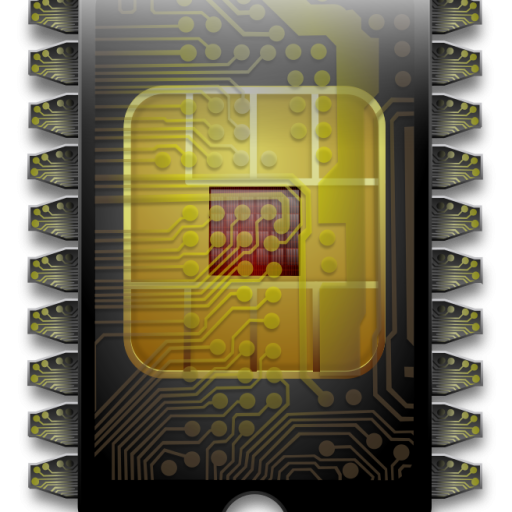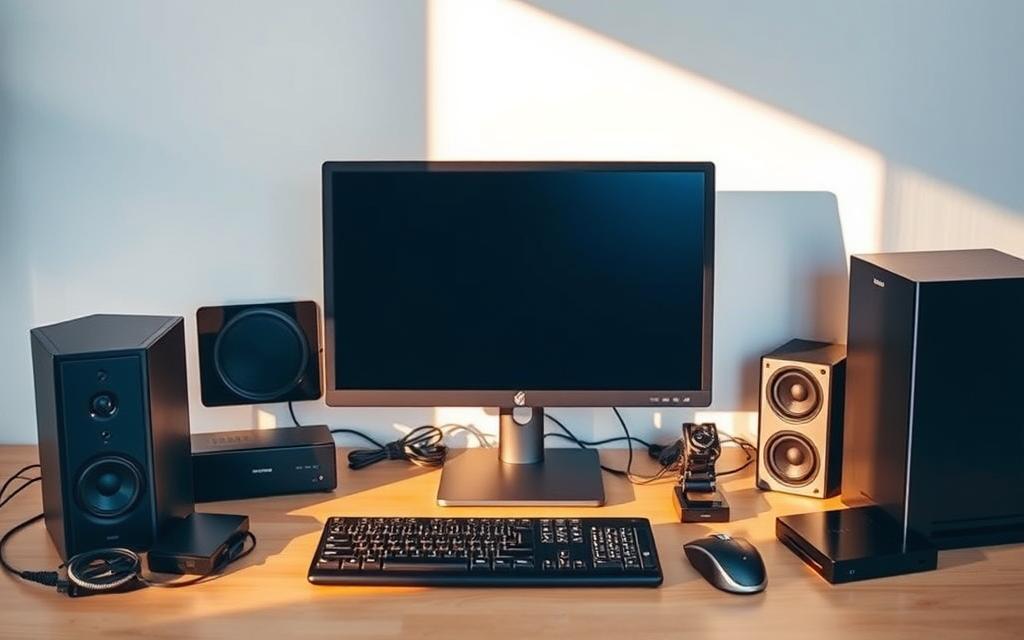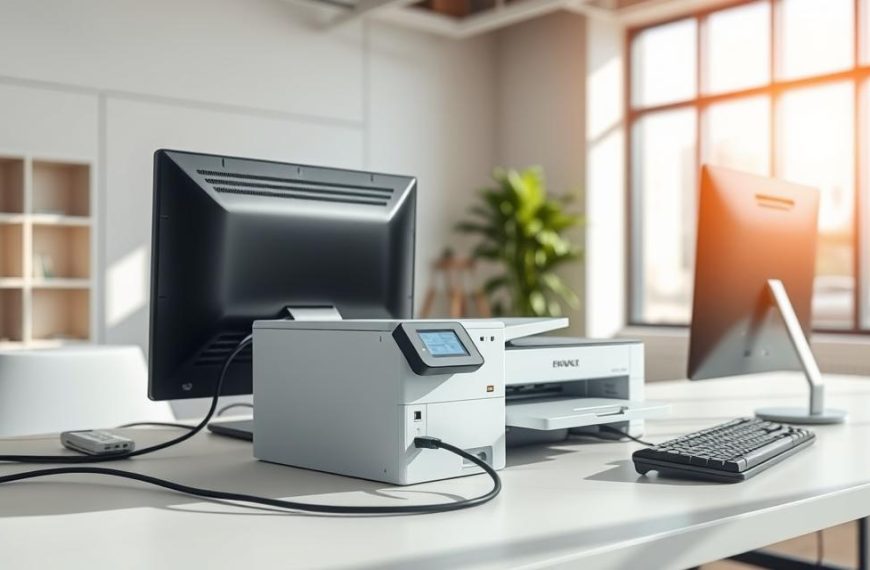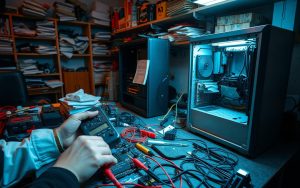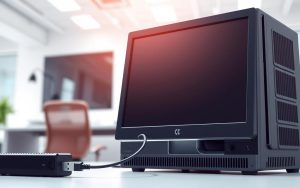When discussing computing systems, it’s essential to distinguish between tangible hardware components and intangible elements. While hardware includes physical parts like processors and keyboards, many aspects of a system fall outside this category.
Common misconceptions often blur the lines between hardware and other components. For example, software—programs and applications—are not physical. They rely on hardware to function but are not part of it. Understanding this difference is crucial for effective tech literacy.
Other non-hardware elements include firmware, data, and networking infrastructure. These play vital roles in system performance but aren’t physical components. Recognizing these distinctions helps in troubleshooting and optimizing your setup.
By exploring these categories, you’ll gain a clearer picture of what truly defines computer hardware and what doesn’t. This knowledge is invaluable for both beginners and seasoned tech enthusiasts.
Introduction to Computer Hardware and Its Importance
Computer hardware forms the backbone of every digital operation, enabling seamless functionality. These physical components include the CPU, motherboard, RAM, and storage devices. Together, they create the foundation for any computer system to operate efficiently.
From early room-sized machines to today’s compact devices, hardware has evolved dramatically. Modern advancements like DDR5 RAM and NVMe SSDs have significantly boosted processing speeds and memory capabilities. This progress ensures faster, more reliable performance for users.
The quality of hardware directly impacts a computer system’s performance. High-end components ensure smoother multitasking, faster data access, and better overall user experience. Investing in reliable hardware is essential for both personal and professional use.
Understanding the role of hardware helps users make informed decisions when building or upgrading their systems. For a deeper dive into the topic, explore computer hardware on Wikipedia. This knowledge empowers users to optimize their setups for maximum efficiency.
Understanding the Basics: What Is Computer Hardware?
To grasp the essentials of computing, start by identifying its physical building blocks. These hardware components form the backbone of any system, enabling it to perform tasks efficiently. From processing data to storing information, each part plays a critical role.
Core Components of Computer Hardware
The CPU, or Central Processing Unit, acts as the brain of the system. Modern processors like Intel Core i9 and AMD Ryzen deliver exceptional speed and multitasking capabilities. Alongside the CPU, the GPU (Graphics Processing Unit) handles visual rendering, with models like NVIDIA RTX 4090 setting new standards.
RAM (Random Access Memory) ensures smooth operation by temporarily storing active data. Higher RAM capacity allows for faster access and better multitasking. Storage drives, another key component, come in various forms. Traditional HDDs offer large capacities, while SSDs and NVMe drives provide faster data transfer rates.
Input and Output Devices
Input devices like mechanical keyboards and high-resolution cameras enable user interaction. Output devices, such as 4K monitors and printers, display or produce results. These peripherals enhance the overall functionality of a system.
Emerging Hardware Technologies
Innovations like AI accelerators and quantum computing chips are reshaping the tech landscape. These advancements promise unprecedented processing power and efficiency, paving the way for future applications.
| Component | Type | Example |
|---|---|---|
| Processor | CPU | Intel Core i9 |
| Graphics | GPU | NVIDIA RTX 4090 |
| Memory | RAM | 32GB DDR5 |
| Storage | NVMe SSD | Samsung 980 Pro |
For a deeper dive into hardware components, explore this comprehensive guide. Understanding these elements empowers users to make informed decisions when building or upgrading their systems.
Which of the Following Is Not Considered Computer Hardware?
Not everything in a computing system is a tangible part you can touch. While hardware includes physical components like CPUs and keyboards, other elements are purely digital. These intangible aspects are equally important but fall outside the hardware category.
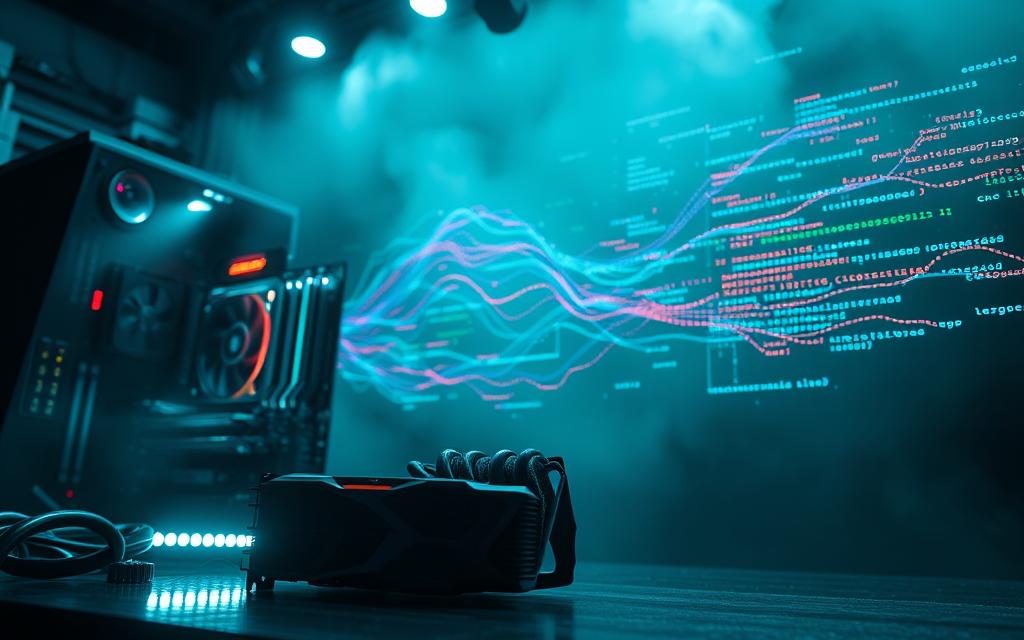
Software is a prime example of non-hardware elements. It includes programs, applications, and operating systems that run on physical devices. Unlike hardware, software exists as code and data, requiring a device to function.
Software vs. Hardware: Key Differences
One major difference is their physical nature. Hardware can be seen and touched, while software is digital. For instance, Microsoft Windows and macOS are operating systems that manage hardware resources. Adobe Photoshop and Microsoft 365 are applications that perform specific tasks.
Installation and updates also differ. Software is installed via downloads or discs, while hardware requires physical assembly. Upgrading software often involves downloading patches, whereas hardware upgrades need new components.
License models are unique to software. Some programs use perpetual licenses, allowing indefinite use after purchase. Others, like subscription-based services, require ongoing payments. This flexibility isn’t available with hardware.
Troubleshooting also highlights the differences. Software issues often involve bugs or compatibility problems, fixed through updates or reinstallation. Hardware problems, like a failing hard drive, require physical repairs or replacements.
“Software is the soul of the system, while hardware is its body.”
Understanding these distinctions helps users diagnose issues and make informed decisions. Whether you’re troubleshooting or upgrading, knowing what isn’t hardware is just as crucial as knowing what is.
The Role of Firmware in Computer Systems
Firmware plays a critical role in bridging the gap between physical components and digital operations. It acts as a mediator, ensuring hardware and software work seamlessly together. Without firmware, devices like your motherboard or SSD wouldn’t function properly.
How Firmware Interacts with Hardware
Firmware is embedded into devices during manufacturing and stored on chips like the motherboard’s BIOS. It initializes hardware configuration during startup, ensuring all components are ready for use. Modern systems often use UEFI firmware, which replaces traditional BIOS for faster boot times and enhanced security.
Updating firmware is essential for optimal performance. For example, SSD firmware updates can improve speed and reliability. Similarly, GPU vBIOS updates enhance graphics processing capabilities. These updates ensure devices remain compatible with new software and hardware advancements.
- Firmware acts as a bridge between hardware and software.
- UEFI firmware is replacing traditional BIOS in modern systems.
- Regular updates improve performance and security.
Security is another critical aspect. Firmware-level vulnerabilities can expose systems to risks. For instance, a compromised BIOS could allow unauthorized access. Manufacturers release patches to address these issues, making firmware updates a vital part of system maintenance.
“Firmware is the silent enabler, ensuring hardware and software work in harmony.”
Understanding firmware’s role helps users maintain their systems effectively. Whether it’s updating a motherboard or optimizing an SSD, firmware ensures your devices perform at their best.
Data: The Intangible Component of Computing
In the digital age, data drives decisions and innovations, yet it remains intangible. Unlike physical hardware, data is stored on devices like hard drives and SSDs but isn’t a physical component itself. This distinction is crucial for understanding how modern systems operate.
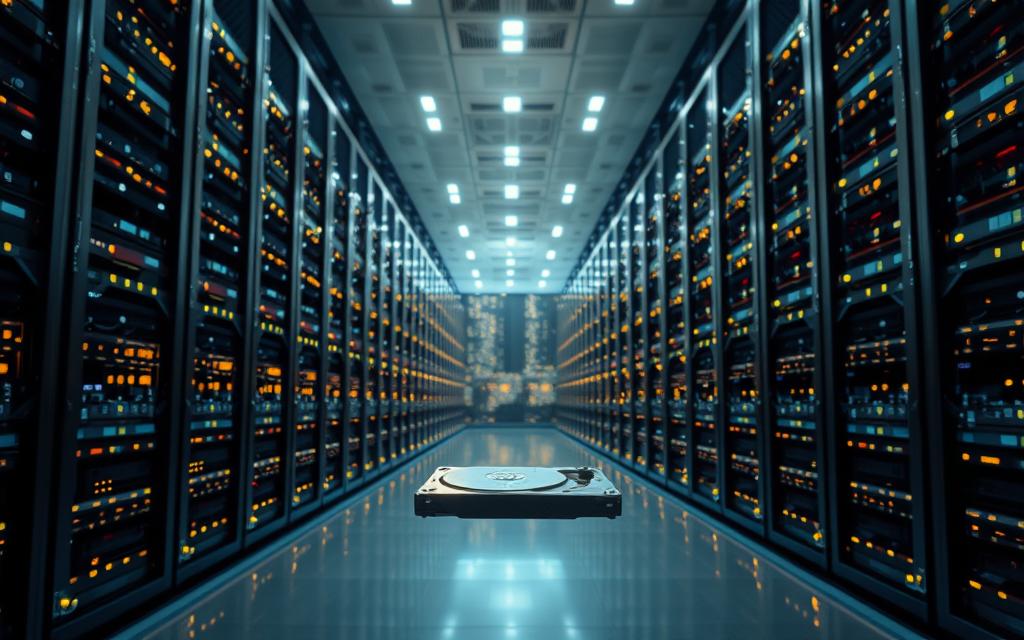
Data Management and Its Importance
Effective data management ensures that information is accessible, secure, and organized. The lifecycle of data includes creation, processing, and archiving. Each stage requires careful handling to maintain accuracy and relevance.
Storage formats play a significant role in data management. For example, NTFS and APFS are common file systems, each with unique advantages. RAW and JPEG formats are used for images, balancing quality and size. Choosing the right format depends on the intended use.
Cloud storage has transformed how information is managed. It reduces reliance on physical hard drives and offers scalable solutions. However, it also requires robust hardware for seamless access and security.
- Data lifecycle: creation > processing > archiving
- Storage formats: NTFS vs APFS, RAW vs JPEG
- Cloud storage implications for hardware
- Enterprise tools: SAN/NAS systems
“Data is the new oil, fueling innovation and efficiency in every industry.”
Enterprise-level tools like SAN (Storage Area Network) and NAS (Network Attached Storage) systems are essential for managing large volumes of information. These solutions ensure high availability and performance, meeting the demands of modern businesses.
Networking Infrastructure: Not Part of Computer Hardware
Networking infrastructure plays a vital role in modern computing but isn’t classified as physical hardware. While it enables communication between devices, it operates differently from core components like CPUs or RAM. Understanding this distinction helps clarify its role in system functionality.

How Networking Components Function
Devices like routers and modems facilitate data transfer but aren’t core hardware. Network Interface Cards (NICs) are hardware components, while the broader infrastructure includes cables, switches, and protocols. These elements work together to ensure seamless connectivity.
The OSI model highlights the interaction between hardware and networks. Physical layers involve tangible components, while higher layers focus on data transmission. This layered approach ensures efficient communication across systems.
- NICs are hardware; switches and cables are infrastructure.
- OSI model layers define hardware-network interaction.
- Wireless standards like Wi-Fi 6E impact hardware requirements.
- IoT devices rely on robust networking infrastructure.
Consumer and enterprise networking equipment differ significantly. Brands like Netgear cater to home users, while Cisco provides advanced solutions for businesses. These differences reflect varying needs for speed, security, and scalability.
| Category | Consumer Gear | Enterprise Gear |
|---|---|---|
| Brands | Netgear, TP-Link | Cisco, Juniper |
| Speed | Up to 1 Gbps | Up to 100 Gbps |
| Security | Basic encryption | Advanced firewalls |
| Scalability | Limited | High |
Wireless standards like Wi-Fi 6E influence hardware design. Devices must support higher frequencies and bandwidths to leverage these advancements. IoT devices, such as smart home gadgets, depend on reliable networks for optimal performance.
“Networking infrastructure is the backbone of connectivity, enabling seamless communication across devices.”
By understanding the distinction between hardware and networking infrastructure, users can better optimize their systems for efficiency and reliability.
Peripherals: Enhancing Computer Functionality
Peripheral devices expand the capabilities of a computer system, offering additional functionality beyond core components. These devices, while not essential for basic operation, significantly enhance user experience and productivity. From input devices like keyboards to output devices like monitors, peripherals play a vital role in modern computing.

Examples of Peripheral Devices
Common peripheral devices include printers, scanners, and external storage. These tools allow users to perform tasks like printing documents, digitizing images, and expanding storage capacity. Each device connects to the system, either wired or wirelessly, to provide specific functionalities.
Wired vs. Wireless Peripherals
Wired devices, such as USB-C keyboards, offer reliable connections with minimal latency. Wireless options, like Bluetooth 5.3-enabled mice, provide flexibility and reduce cable clutter. Choosing between wired and wireless depends on user preferences and specific use cases.
Gaming and Professional Peripherals
Gaming enthusiasts often opt for mechanical keyboards and high-DPI mice for precision and responsiveness. Professionals, on the other hand, rely on tools like Wacom tablets for graphic design and RAID enclosures for data redundancy. These specialized peripherals cater to unique needs, enhancing performance in specific fields.
Driver Software Requirements
Most input output devices require driver software to function correctly. These drivers ensure compatibility between the device and the operating system. Regular updates are necessary to maintain optimal performance and security.
- Printers and scanners expand document handling capabilities.
- External storage devices provide additional data capacity.
- Mechanical keyboards and high-DPI mice enhance gaming experiences.
- Wacom tablets and RAID enclosures support professional workflows.
“Peripherals transform a basic setup into a versatile workstation, tailored to individual needs.”
Understanding the role of peripheral devices helps users optimize their systems for specific tasks. Whether for gaming, professional work, or everyday use, these tools are indispensable in modern computing.
Conclusion: Understanding What Isn’t Computer Hardware
Grasping what falls outside the realm of physical components is key to mastering modern computing. While computer hardware forms the foundation, elements like software, firmware, and peripherals are equally vital. These intangible aspects enhance functionality and ensure seamless operations.
Emerging trends, such as FPGAs, are blurring the lines between hardware and software. These advancements offer flexibility and performance, making them essential for future-proofing your setup. Staying updated on such innovations ensures your system remains competitive.
Regular maintenance is crucial for longevity. Keep drivers updated, clean components, and monitor performance. These practices prevent issues and extend the life of your devices.
Investing in a balanced setup is the ultimate goal. Prioritize both physical and non-physical elements to optimize performance. This approach ensures your computer hardware and software work harmoniously, delivering the best experience.
